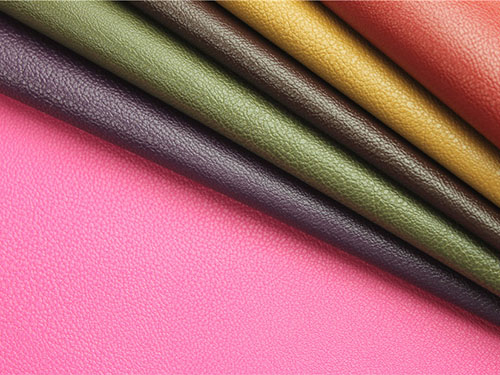
Generally speaking, the thickness, density and distribution of pores on the leather surface are the main basis for distinguishing cow leather, pig leather, horse leather and sheep leather.
1. Pig leather: The pores on the surface of the leather are round and thick, and they extend into the leather obliquely. The pores are arranged in groups of three, the leather surface presents many small triangle patterns, each group is far apart, and the surface is rough. Three holes and one-level like triangles are regularly arranged on the leather surface. The skin fiber is thin and short, and the fiber structure is tighter than cow leather. The flexibility is not as good as cow leather, but the wear resistance is higher than cow leather. The leather surface feels hard and has poor gloss.
2. Cow leather: Yellow cattle leather and buffalo leather are both called cattle leather, but there are certain differences between the two. The pores on the surface of the scalper leather are round and extend straight into the leather. The pores are tight and uniform, and they are arranged irregularly, like a sky full of stars. The pores on the surface of buffalo leather are larger than scalpel leather, and the number of pores is less than that of scalpel leather.
(1) Yellow cattle leather: The pores of the leather are tight, round and small, the cortex is fuller, the cortical fibers are arranged in staggered, evenly and tightly distributed, but the arrangement is irregular, the fiber structure is slender and compact, the tensile strength is strong, the toughness is strong, and the leather surface is smooth. Does not wrinkle easily. The pores extend straight into the leather.
(2) Buffalo leather: The pores of the leather are round and thick, and the pores are less than that of yellow cow leather. The surface pores are larger than that of yellow cowhide. Its fiber structure is not as loose as yellow cowhide, but the skin is thicker; the leather surface is looser, than yellow cowhide. Slightly rough.
3. Horse leather: The pores are tight and arranged in a certain shape, and the cortex is loose. It is not as wear-resistant as cowhide and has low tension resistance. The pores on the surface are not obvious. When you look closely, you will find that it is oval, slightly larger than the pores of the cowhide. It extends diagonally into the leather and is arranged regularly in the shape of a mountain; the leather surface is more delicate and soft, but the color is not as bright as cowhide. gray.
4. Sheep leather: The pores on the grain surface of the leather are oblate, with clear pores. Several pieces form a group, arranged in fish scales.
(1) Goat leather: The leather surface has 2-4 new pores arranged in a semi-circular arc, surrounded by a large number of small fluff pores. The fibers in the leather are strong and compact, strong and wear-resistant, soft and elastic. It is used in leather clothing. Common. The leather surface is fine, the fibers are tight, and there are a lot of fine fluff pores. The pores are semicircular, and a group of several, arranged like scales or serrations, with clear pores; the leather is elastic and feels tough.
(2) Sheep leather: The leather board is thin, and the hand feels very soft. The pores are small and oblate. Several pores form a first-level row and are evenly distributed. The fibers in the leather are relatively thin and loose, so they are not strong and wear-resistant. The leather surface is loose, but it is fine, smooth, elastic, with small pores, and soft to the touch, but not as firm as goat leather.
5. Artificial leather and synthetic leather: There are no pores. If it is made with pores, the pores will be arranged regularly; if it is made of imitation sheepskin, the leather surface will be plump, smooth, firm and elastic, and it can almost be fake, but it can also be observed carefully. You can see the traces of the mold after plastic pressing. Artificial leather and synthetic leather are composite materials made of textiles or non-woven fabrics as a base and combined with synthetic resins. They are plastic products similar to natural leather. They all have the characteristics of soft, wear-resistant and elastic. They are widely used, but have poor air permeability. Look carefully at the front and have no natural pores. The back bottom is woven or non-woven, not animal skin. In addition, artificial leather and synthetic leather have poor cold resistance, and will become hard and brittle if they are too cold.